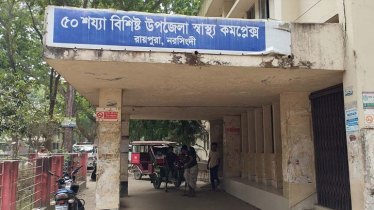
Many families of Bijayanagar upazila of Brahmanbaria are actively involved in commercial production of ‘lali gur,’ a special variety of molasses. Photo: Messenger
'Lali gur,' a special molasses derived from sugarcane juice in Brahmanbaria district's Bijoynagar, has been gaining nationwide fame for many years now.
This delectable 'lali' molasses has been a highlight in the agriculturally dependent Bijoynagar upazila for the past few years, primarily produced during the winter season.
This seasonal treat is often enjoyed by food enthusiasts alongside winter cakes or with puffed rice. The local agricultural association is optimistic about achieving sales worth around Tk 1 crore 3 million this year.
The production of 'Lali' is intricately linked to the winter season, becoming a culinary delight for locals. Consumers relish this molasses as an accompaniment to various winter delicacies. The Agricultural Department reports that sugarcane cultivation is a commercial venture in several areas of Brahmanbaria District, including Sadar Upazila, Vijaynagar Upazila, Kasba Upazila, and Akhaura Upazila. Traditional methods are employed by farmers to produce this unique molasses from sugarcane juice.
In Bijoynagar upazila alone, sugarcane is cultivated on 25 hectares of land, with an anticipated production of at least 100 tons of red sugar. The market value of this production is estimated to be at least 1 crore 30 lakh taka. More than fifty families in Bishnupur, Dulalpur, and Bakhtarmura villages of Vijayanagar upazila are actively involved in commercial ‘lalai’ molasses production. The process of making 'lali' starts at the onset of winter, typically from the last week of November to February, constituting a significant part of the local economy.
The daily routine of producing 'lali' begins at dawn and continues until dusk. Initially, sugarcane is crushed to extract its juice. This juice is then strained and collected in a large pan, where it is thickened through burning for two to three hours. The resulting red molasses, or 'lali,' is a delicious and sought-after product, retailing at Tk 150 per kg. Locals and visitors from surrounding areas flock to Bijoynagar to witness the mesmerizing process of 'lali' production, often indulging in sugarcane juice with the blush on their way back.
Md. Arman from Brahmanbaria Sadar Upzilla, who comes to collect red rose every year, expresses his family's fondness for this winter delight, especially when paired with 'pitha.' However, there are challenges faced by those involved in sugarcane cultivation and 'lali' production. The number of sugarcane farmers is decreasing, and the rising wages for cutting and threshing work, along with the expense of acquiring buffaloes for the traditional 'ghani' method, pose economic hurdles. The overall cost of producing 'lali' ranges from Tk 7 lakh to 8 lakh, making price adjustments challenging for producers like Md. Zahid Hasan and Md. Shahin Mia of Bishnupur village.
Despite these challenges, red sugar farmers like Shahnewaz, also from Bishnupur, continue the generational tradition of 'lali' production. They acknowledge the diminishing profit margins and reduced sugarcane cultivation in their village but remain committed to maintaining this age-old practice.
In response to concerns about the quality of 'lali gur,' Vijayanagar Upazila Agricultural Extension Officer Junaid Al Sadi assures that no harmful chemicals are used in its production. The Upazila Agriculture Department actively provides guidance and support to those involved in red jaggery production, emphasizing the preservation of traditional methods and the purity of this cherished seasonal delight.
Messenger/Fameema








